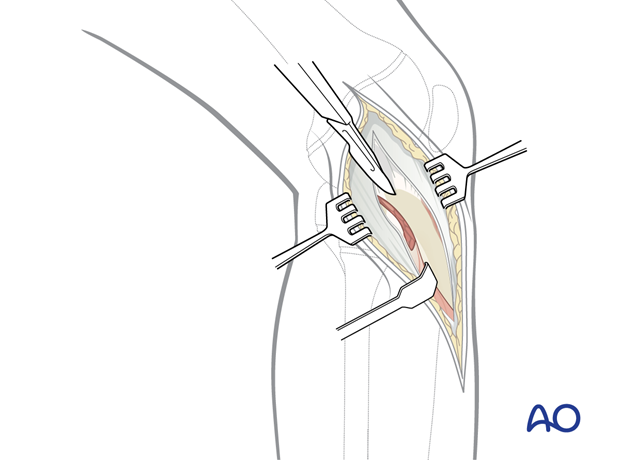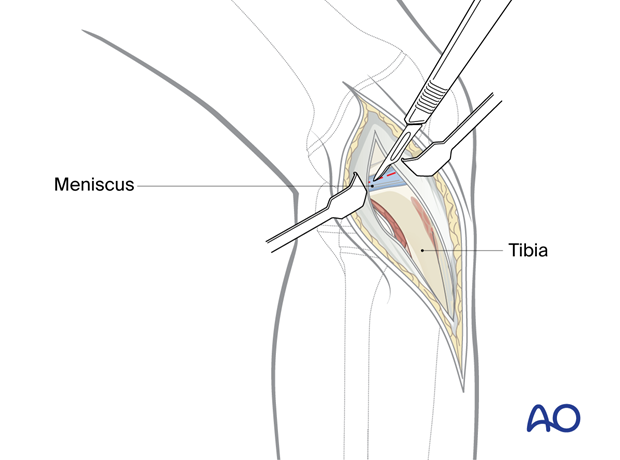Anterolateral approach to the proximal tibia
1. Indications
This approach may be used for fixation of the upper tibial shaft and Salter-Harris II–IV fractures of the proximal tibia with a large anterolateral component.
Periosteal stripping or physeal compression should be avoided.
2. Skin incision
Make a straight incision lateral to the patellar tendon starting at the level of the joint line extending distally as needed.

3. Opening the fascia
Open the deep fascia leaving sufficient attachment to the bone anteriorly to allow closure.

Release the proximal attachment of the tibialis anterior.
Avoid the peroneal nerve, which runs posterior to the biceps femoris tendon at its attachment to the fibular head.

4. Arthrotomy
To expose the joint, incise the capsule horizontally between the deep edge of the meniscus and the tibia.

5. Wound closure
Reattach the meniscus and repair the joint capsule with absorbable sutures.
Close the skin and subcutaneous tissues according to surgeon preference.













